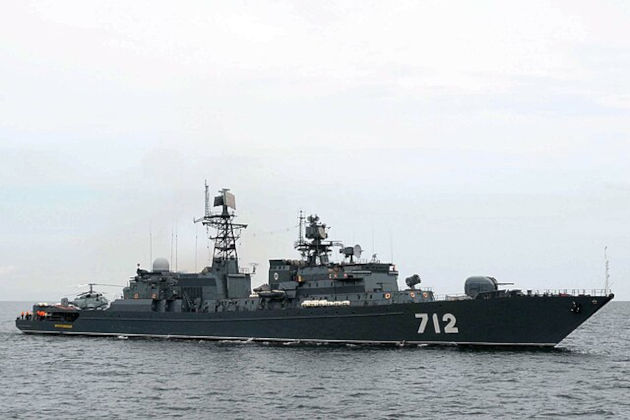Russia Ranks Third in Global Military Shipbuilding: Insights from the 2024 IMEMO Analysis
Russia holds the third position in global military shipbuilding, following China and the United States, according to an analysis conducted by the Institute of World Economy and International Relations (IMEMO) of the Russian Academy of Sciences, based on data from the end of 2024.
The report titled “Maritime Powers 2024, IMEMO Indices” continues a series of annual evaluations of the maritime capabilities of 100 countries, a publication initiative that began in 2021. This comprehensive analysis assesses various aspects of naval power, including shipbuilding capabilities, and provides insights into the competitive landscape of military maritime strength.

Source: wikipedia.org
In the realm of military shipbuilding, Russia has successfully maintained its established third-place ranking, increasing its score from 11 084 points in the previous assessment to 12 516 points this year. The analysis suggests that the pace of military shipbuilding in Russia is unlikely to see a significant decline in the coming years, indicating a stable trajectory for the country’s naval development.
When examining the leaders in shipbuilding, China continues to dominate the field, achieving a score of 17 025 points in 2023, although this is a decrease from the 21 212 points recorded in 2022. Notably, while China constructed more military vessels in 2023—20 ships compared to 17 in 2022—the total standard displacement of these ships was considerably lower, amounting to 70 000 tons versus 103 000 tons in the previous year. This discrepancy highlights the complexities of naval capabilities beyond mere quantity.
The United States, which scored 15 461 points in 2023 (down slightly from 15 598 in 2022), also increased its military ship production, building 17 vessels compared to 14 the year before. However, similar to China, the total displacement of US ships decreased, with a total of 66 000 tons in 2023 compared to 71 000 tons in 2022. This trend suggests that both nations are facing challenges in maintaining the size and capacity of their naval fleets.
The analysis posits that the United States may be reaching the peak of its current shipbuilding capabilities, making it unlikely to significantly increase production in the years 2024-2025. In contrast, China appears to be ramping up its serial production of nuclear submarines, which could yield additional points and enhance its maritime strength. Furthermore, the anticipated commissioning of new Chinese and American aircraft carriers in 2025 is a critical factor to consider. If these carriers are commissioned in different years, it could lead to contrasting fluctuations in the maritime indices of these two countries over the next two years, reflecting the dynamic nature of global naval power.
Overall, the analysis underscores the competitive landscape of military shipbuilding and the strategic implications for global maritime security, as nations continue to invest in and develop their naval capabilities.

